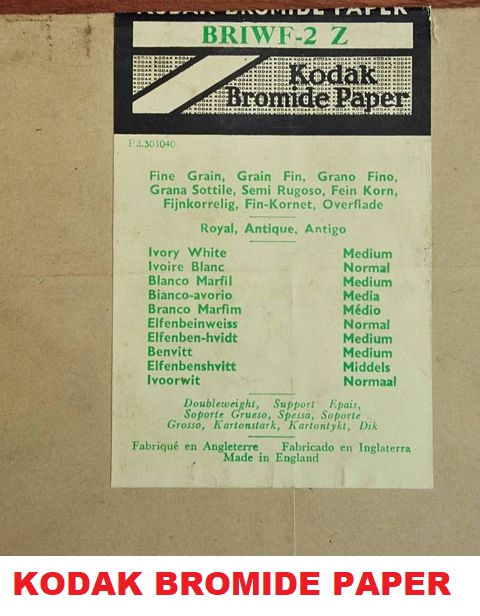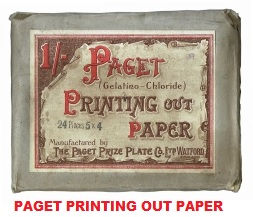Submitted by Al …
(Adapted from The Encyclopedia of Photography ©1963)
Printing papers usually have emulsions similar to the negative emulsion; that is, their latent image has to be "developed out." These papers are divided into three classes, according to the base of the emulsion: bromide, chloride, and chlorobromide.


Developing-out papers are fast and cannot be handled in daylight. Printing-out papers on the other hand, require no development. The image appears as the paper is exposed to strong daylight and can be watched as it grows in depth until the proper density is reached. Printing-out papers are used primarily by portrait photographers for proofing. Since the prints are deliberately left unfixed, the paper eventually turns completely black or dark brown. However, the prints may be viewed for some time by artificial light (except strong daylight-type fluorescent lights) without noticeable fogging.

If the ordinary printing-out paper is fixed in a plain hypo bath or a hardening fixing bath, the resulting image is composed of finely divided silver and has an unpleasant yellow-brown tone. Such processing can be used to obtain permanent prints, but the image first is treated with some type of gold or platinum toner which results in a more pleasant colour. A commonly used gold toning bath is:
Solution A
Ammonium thiocyanate 145 grains10.0 gms
Water to make 16 ounces 500.0 cc
Solution B
Gold chloride 15 grains1.0 gm
Water to make 16 ounces 500.0 cc
For use, the two solutions are mixed in various proportions, depending on the image tone desired. For cold purple-black tones, use 50 cc of A, 50 cc of B, and 500 cc of water. For brown tones, use 12 cc of A, 12 cc of B, and 500 cc of water. For red tones, use 6 cc of A, 6 cc of B, and 500 cc of water.
Prints which are to be fixed must be exposed through a contrasty negative to sunlight or strong arc light and should be examined for proper exposure by opening the back of the printing frame. The image should appear somewhat darker than is desired in the final print, since some loss in density takes place in fixing and toning. The paper is rinsed for about a minute in plain water then immersed in the toning bath until the desired tone is obtained. It is then rinsed again, fixed for five to ten minutes in a plain hypo bath with no hardener or acid, and finally washed and dried. Since the emulsion has not been hardened, heat should not be used in drying.
Platinum toning baths have been recommended to produce black tones on printing-out paper, but such prints have no particular advantage over prints made on regular developing papers. Furthermore, the platinum salts used are very expensive.
Printing-out papers are easily made by sizing an ordinary piece of paper with a paste of chloride (or other salts) and then sensitizing it with a solution of silver nitrate. These papers, called salted papers, are important only because they represent a simple means of making a light-sensitive paper, cloth, or other material.
Commenti